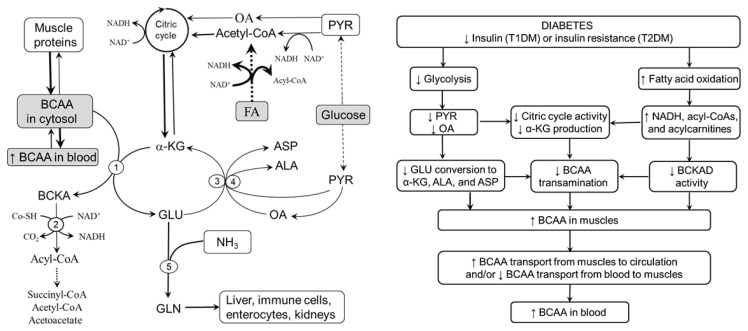Fig. 3.
Supposed pathogenesis of increased BCAA levels in diabetes. Insulin deficiency and insulin resistance are characterized by impaired glycolysis and increased, but incomplete, fatty acid oxidation. The consequences are decreased BCAA transamination due to decreased supply of all acceptors of amino nitrogen and decreased flux through BCKAD due to the inhibitory influence of enhanced levels of NADH and acyl-CoA. Increased BCAA concentrations in muscles should lead to increased plasma BCAA levels via decreased BCAA disappearance from blood in the postprandial state and/or their increased release from muscles in the fasted state. 1, BCAAT; 2, BCKAD; 3, ALT; 4, AST; 5, GLN synthetase. ALA, alanine; ASP, aspartic acid; FA, fatty acids; GLU, glutamic acid; GLN, glutamine; OA, oxaloacetate; PYR, pyruvate.

